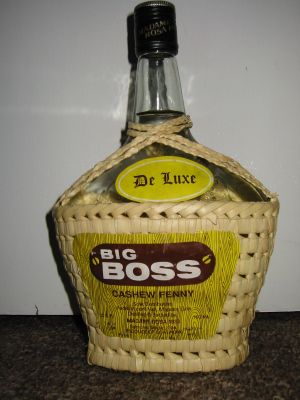Of Cazzews & Cawcawnuts
Goa- India’s favourite holiday destination.
A city where people work their way around afternoon siesta breaks and where everyone knows stories about everyone else. A city infested with speed breakers and when there aren’t any, the shadows of the palm trunks across the narrow roads play on your paranoia. The Goa I remember as a child is about touch me-not plants along the fields, poi with kalchi kodi (yesterday’s curry) for breakfast and collecting ande na vinagre (moon shells that move when put in vinegar) by the sea shore.
Some of that might have changed and now what is most inviting are the gorgeous beaches, great food and cheap alcohol. And what more could you possibly ask for?! (Actually I wouldn’t mind reliable internet once in a while, but in Goa that’s too much to ask for)

According to Goa Blog (dated Sept 2010) there are 4,000 mini traditional distilleries or stills in Goa, that manufacture cashew feni and about 2,200 stills manufacturing coconut feni. Big Boss is one of the most recognised brands of cashew feni but the locals will always tell you that the best place to buy feni is at the nearest gaddo (kiosks).
It took a recent trip there for me to realise that it has so much more to offer the world of alcohol than just dirt-cheap rates. Kings beer apart there’s Toddy, Urrak and Feni – the much-loved country liquors. For a long time all I knew was that they all came from either coconut or cashew or both. So I’ve decided to break it down for those who are still a little confused.
Growing up my feni-loving uncles, in typical ‘maka pao’ style, would subject all the kids to jokes about how cashew feni didn’t only smell on its way in. It smelled the next day too…on it’s way out. Yes, that one was considered a classic! And whether that is what put me off or not I can’t say, but I’m no fan of feni or urrak. It is thanks to my half-goan roots that I manage not to cringe at the smell.
The process:
Feni is the most popular country liquor in Goa and is produced from both coconuts and cashew apples.
After the cashew apples are manually crushed, they are caked together and tied with string with a rock placed on top to extract all the juice. This juice is the Neero or Neera and is non-alcoholic.
The neero is then distilled. The first distillation produces Urrak which is only about 15% alcohol. Urrak is usually enjoyed with Sprite or water.
A part of the Urrak is distilled again. The second distillation is called Cazulo and is more potent than Urrak but less heard of.
The third distillation produces a completely clear Cashew Feni (or Fenny) which can be up to 45% alcohol. Feni is very heady and usually mixed with Sprite, lime juice or even cola and has a very distinct smell.
The coconut feni which is made from the toddy collected from the coconut palms.
If you manage to get past all the jokes that jump into your head while you watch the video below, it explains the entire process of cashew distillation.
I love the punch line of the video ‘For one peg there is no hangover. For one bottle two days hangover’. Bang on!